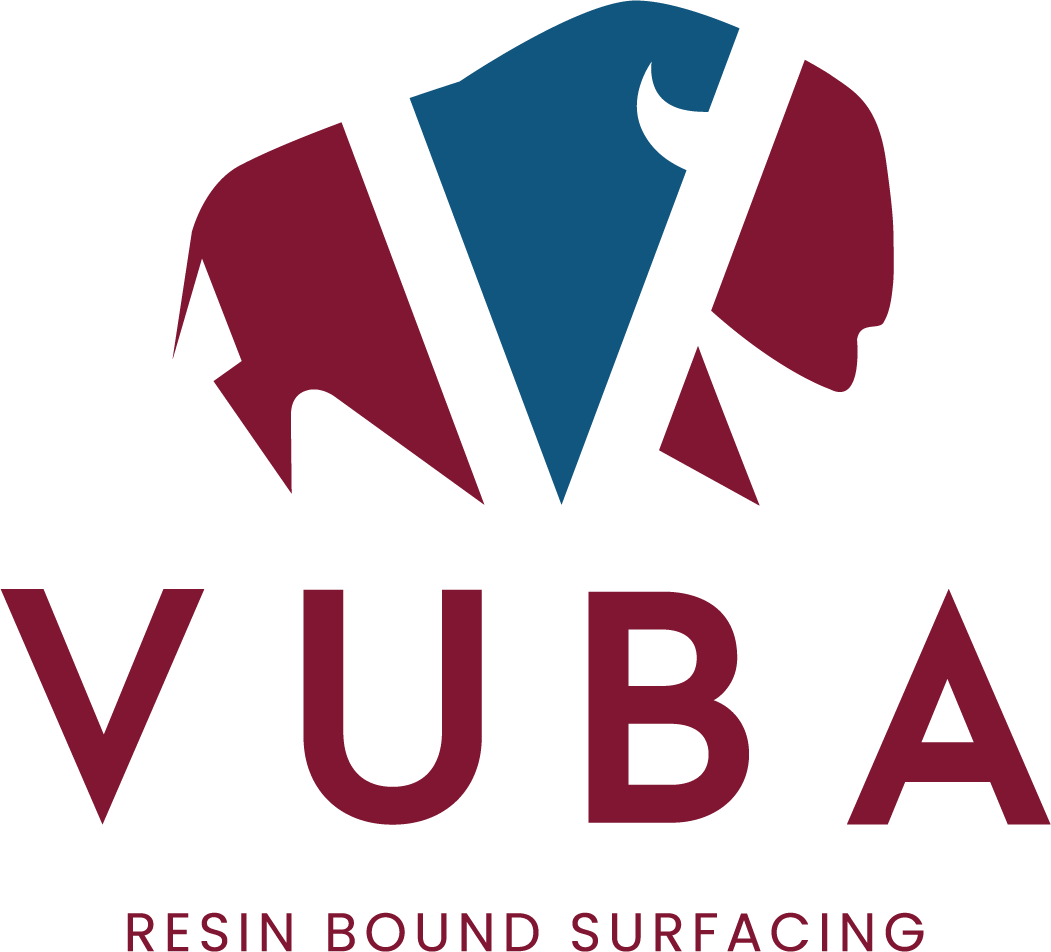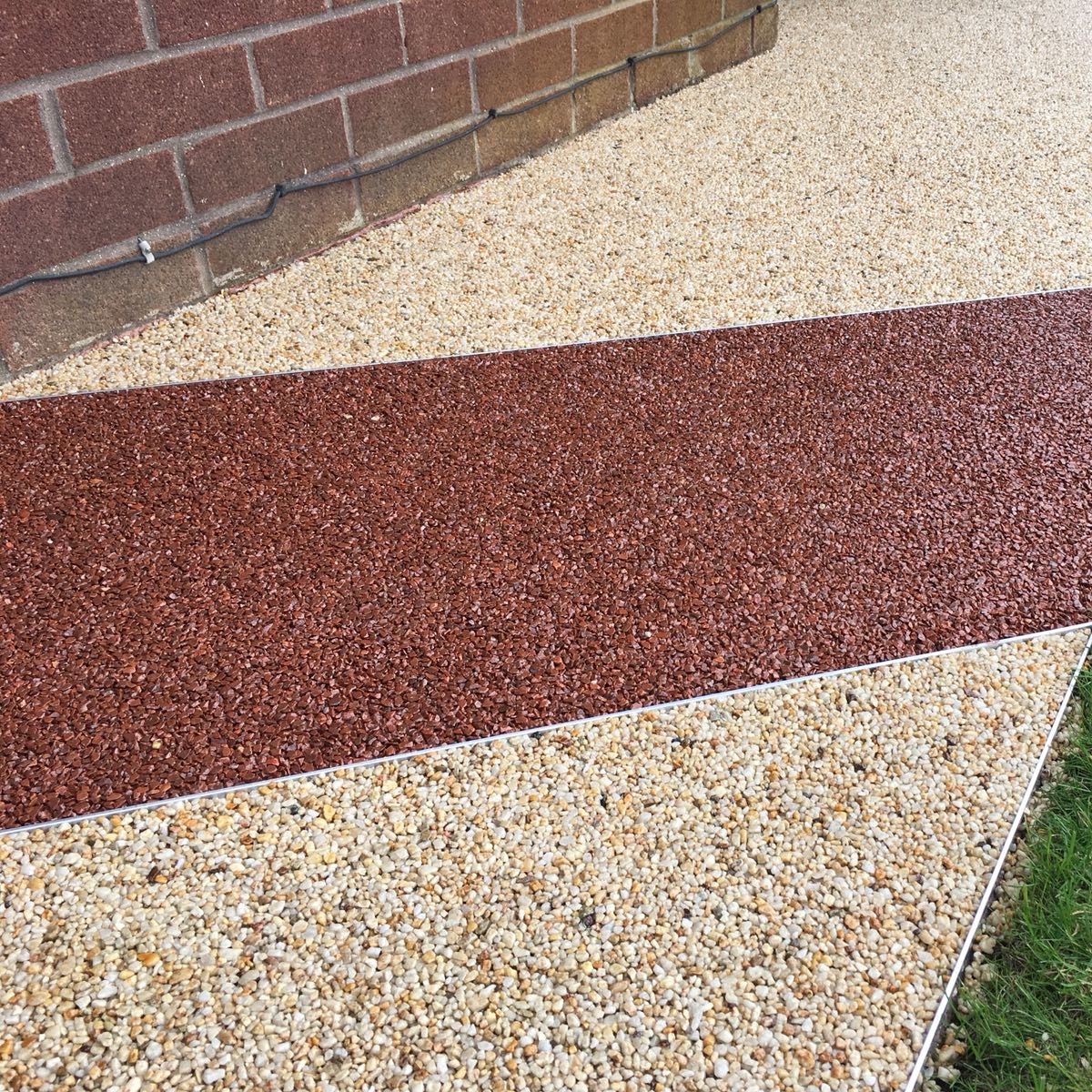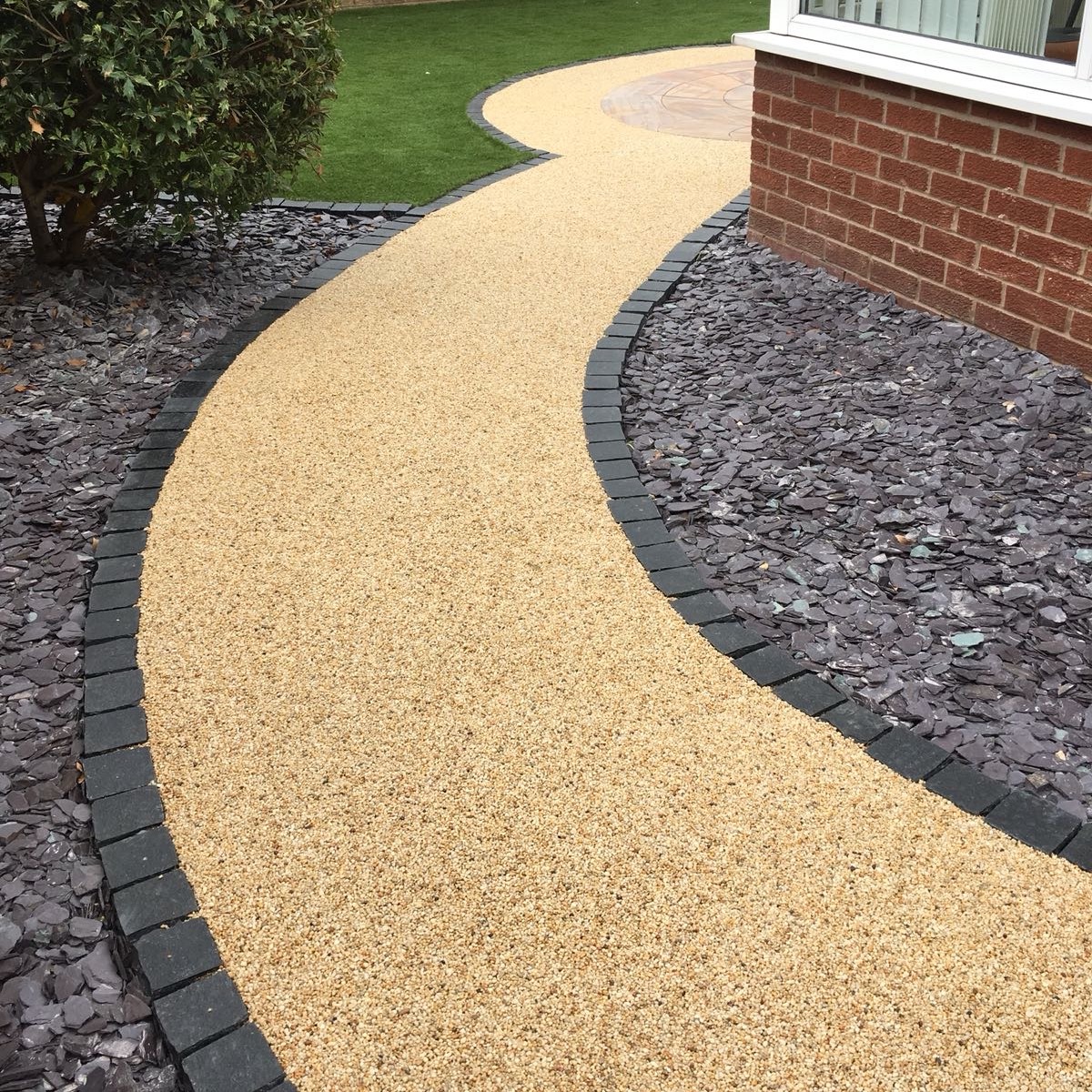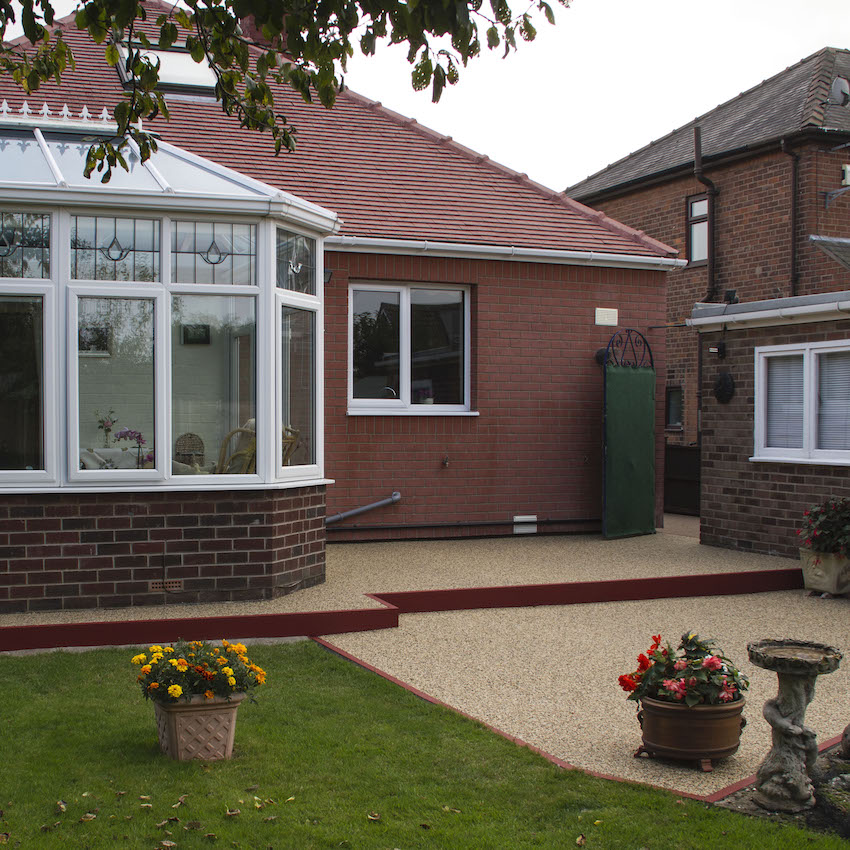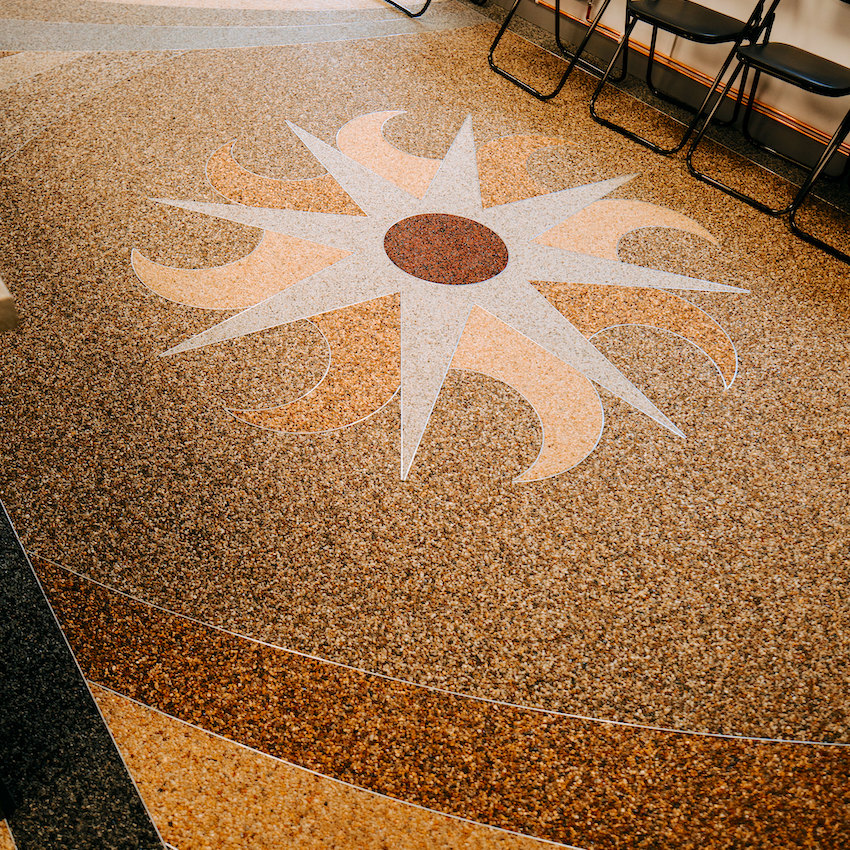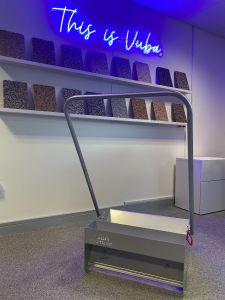1m2 Resin Bound Resin Kit (2-Part 1.75kg)
The Vuba 1m2 Resin Bound Resin Kits are perfect for landscapers, builders and DIY enthusiasts to create fantastic resin bound surfaces without expensive equipment.
Each 1m2 Resin Bound Resin Kit is 1.75kg in size and mixes 25kg aggregate. Laid at 15mm, each mix of resin and aggregate covers 1m2.
You require a plasterer's style drill and paddle for mixing, a gauging trowel for scraping out, a flooring trowel for application and hot soapy water and a brush for cleaning your trowel during application.
not found in our datasheets, please
contact us and a member of staff will
be happy to help.
Everything
you need to
know.
Each 1m2 Resin Bound Resin Kit is 1.625kg in size and mixes 25kg aggregate. Laid at 15mm, each mix of resin and aggregate covers 1m2.
You require a plasterer's style drill and paddle for mixing, a gauging trowel for scraping out, a flooring trowel for application and hot soapy water and a brush for cleaning your trowel during application.
Each kit is comprimised of a Part A (0.930kg) and a Part B (0.695kg). The components are pre-weighed, ready to mix. Do not part mix or change the ratios.
Once mixed a chemical reaction begins to take place and care should be taken to install the resin bound kit within an average 45 minute pot life. Care should be taken to knit together mixes before they have begun to 'tack off'.
We have a large range of aggregates you can purchase with our Resin Bound Resin Kit, you can see our full kits Here.
1m2 Resin Bound Kits must be laid on to a solid base.
What defines a good solid base for resin bound? A structure which is load bearing, not susceptible to cracking and ideally is permeable.
Let's have a look at the options for a base for resin bound surfacing.
Concrete:
1. Concrete bay proportions should be ideally 1:1 and should not be greater than 3:2, long narrow strips of concrete will crack across the bay width and these cracks are likely to be mirrored in the surfacing.
2. Open bay joints are likely to cause cracking in the surfacing and formation should be prevented by application of Epicrete repair mortar into the joints. Bays should be linked with steel mesh reinforcement, or if already in place, a surface grade mesh should be embedded in the surface using an epoxy bedding coat.
3. Ensure that the concrete has a minimum design strength of C35 and that the concrete has a minimum compressive strength of 25N/mm2 before the surface is prepared, in accordance with BS 8500-2:2015.
Drainage:
Ensure that falls are in place to an adequate drainage system when applying to an impermeable concrete base. Water will flow through the resin bound system and run across the concrete surface.
Asphalt (Bituminous Macadam):
The bitumen binder of asphalt concrete must have a pen value no greater than 100/150, when tested in accordance with EN 1426 Needle Penetration Test. It is advisable to use a harder grade of bitumen when machine application is possible and 70/100 pen (or harder) is preferred.
Bituminous materials with a higher pen value will be too soft and may deform in warm weather. Adequate compaction of the sub-base and base is essential to prevent cracking. A minimum 1 tonne “sit on” roller should be used when possible and the contractor must ensure that the construction is fully restrained at all edges to ensure dimensional stability.
Drainage:
Rainwater will flow through the permeable Valtex Resin Bound System, and through the open grade binder course. An integral drainage system is not required.
Cellular Grid:
We would recommend to use VubaGrid cellular grid (40mm in depth). The grid should be set on to a well compacted sub-base as laid out above. The VubaGrid cellular grid should then be filled with well compacted 4/10mm graded crushed aggregate to BS EN12620. The in-fill aggregate must be compacted to ensure the profile of the cellular grid is still visible, and capable of bonding to the resin bound system.
Failure to compact the stones within the grid correctly will result in a slump of the resin bound material through the grid, causing delamination.
Perimeter Edging:
Protect all edges abutting soft landscaping with brick, steel, timber or concrete to prevent damage to the surfacing. Edgings should be securely fixed to prevent movement. A flexible joint filler should be used at edgings where there is potential for movement to separate the surfacing from the edging.
Concrete Preparation:
Prepare concrete by mechanical means to provide a sound, clean, dry substrate that is free from laitance and suitable for application of the resin bound surfacing. Concrete should be primed prior to application using our Easiprime or Epiprime (and seeded with a 1.4 - 1.8mm quartz).
Asphalt (Bituminous Macadam) Preparation:
Allow the asphalt to oxidise for 7 days prior to application of the Valtex Resin Bound Surface. It is not a requirement to prime asphalt surfaces.
Sub-Base:
Before application of an Asphalt / Tarmac base, concrete or cellular grid, there should be in place the correct sub-base. This would be a minimum 150mm depth of well compacted Type 3 granular sub-base to SHW clause 805, or 4/40mm, 4/20mm crushed aggregate to BS EN12620 or locally available secondary or recycled aggregates which comply with the above specification blinded with 2/6.3mm graded crushed concrete aggregate to BS EN12620.
1. Scrape all of the contents of the Hardener B component into the larger Resin A component container and mix with a slow speed drill (≤ 450RPM) and MR2 paddle mixer attachment for 60-90 seconds. Overmixing will increase heat generation and reduce working time.
2. Slowly add the 26.56kg Aggregate Kit whilst mixing, and mix for approximately 2 minutes until the resin has fully encapsulated the stone.
Application Advice:
1. Finish the surface with a suitable float. Vuba Solvent should be used if required to clean trowel before applying a closing finish to the resin bound surface. Close compaction is vital to prevent stone loosening. Most applicators will compact at right angles to how the material was spread out, applying pressure as the trowel is pulled back.
2. If required for added slip resistance, immediately cast Crushed Glass onto the top surface of the wet resin and aggregate, at the rate of approximately 0.1kg/m2. Ensure even coverage to prevent a patchy appearance.
3. Allow to cure and open to traffic as described in the Curing Time tables above.
Further Guidance:
1. Regularity and consistency of mixing times is essential to prevent shading within your Resin Bound System.
2. Ensure you have all bags required for your project prior to commencement, and ensure you have sufficient material by marking coverage per mix on the surface. It is imperative to not run short of material for a fully seamless finish.
3. Ensure you have scheduled to apply your resin bound aggregate system during a period of suitable weather for both application and curing time.
4. Contact Vuba for further advice regarding our Systems.
Blog
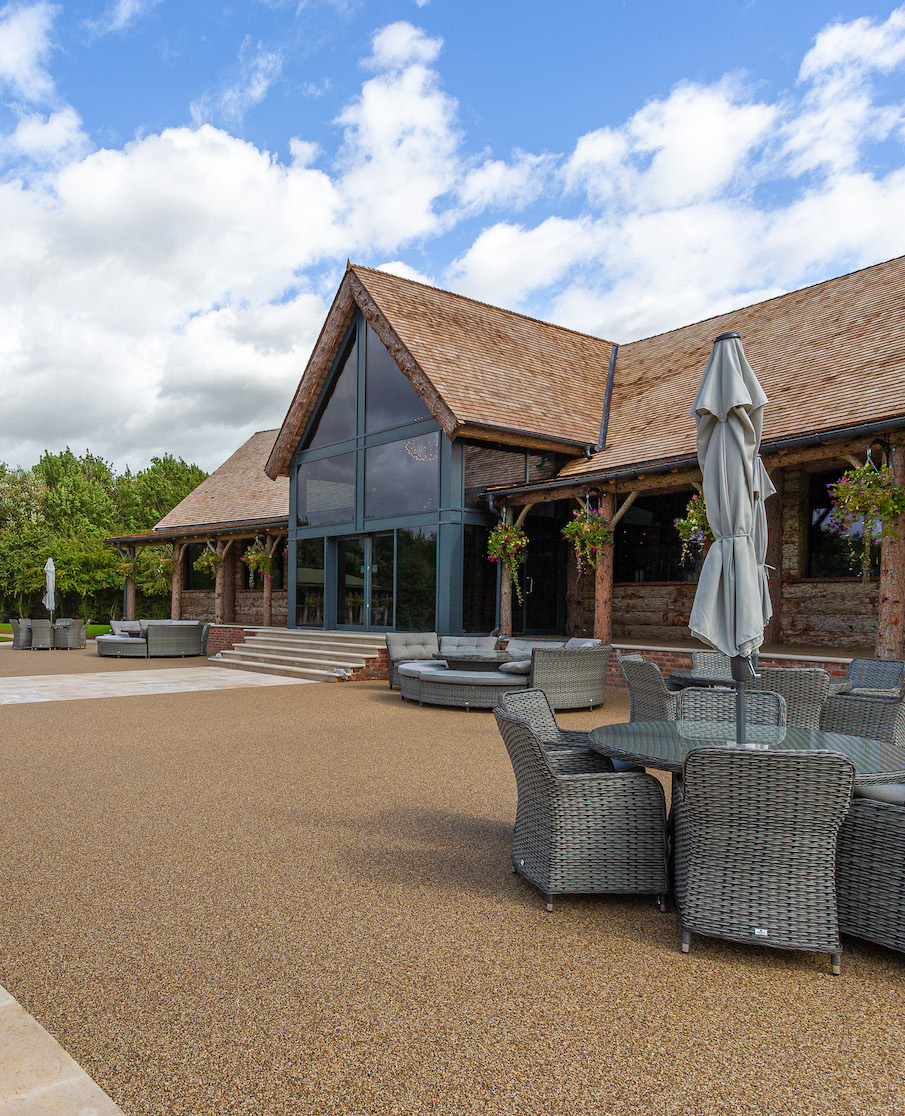
Nestled in the East Riding of Yorkshire, it was very fitting that the O
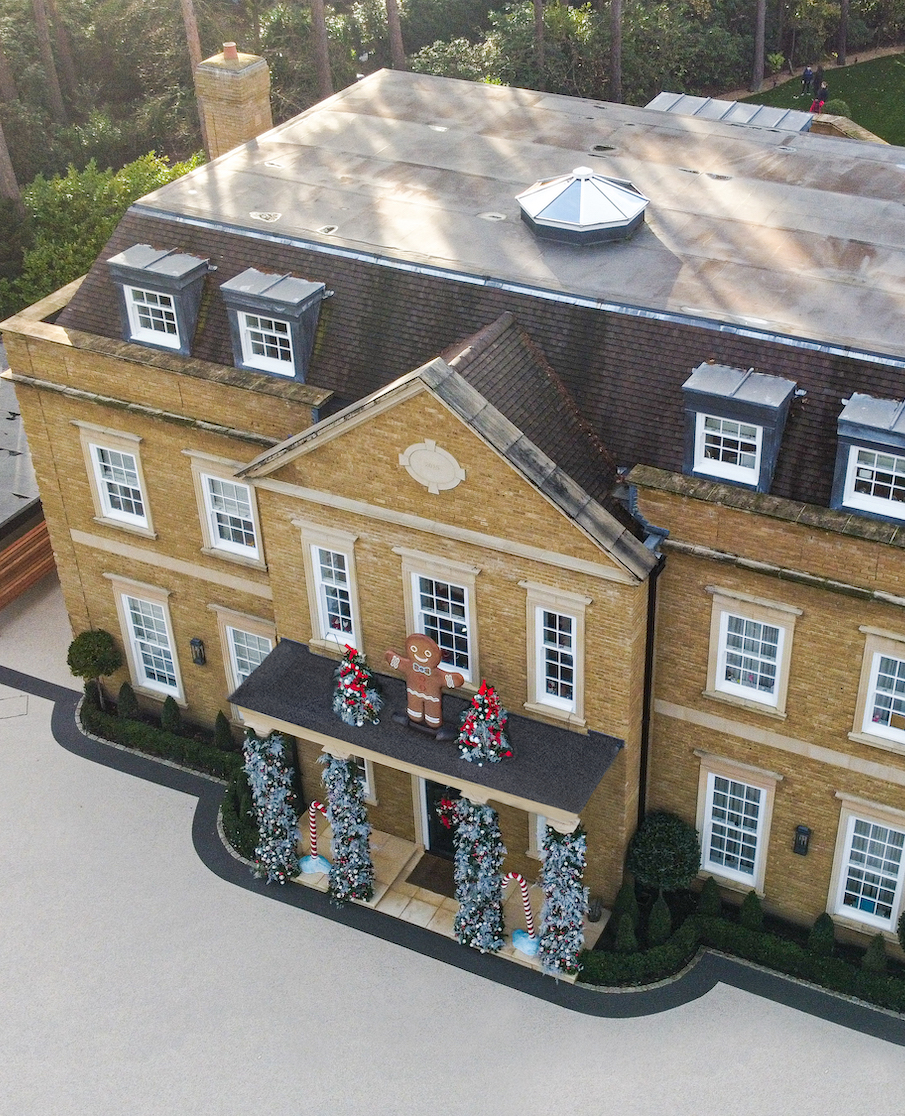
Vuba was thrilled to be specified on this incredible development in the heart of Virgina Waters, Surrey. The existing paving
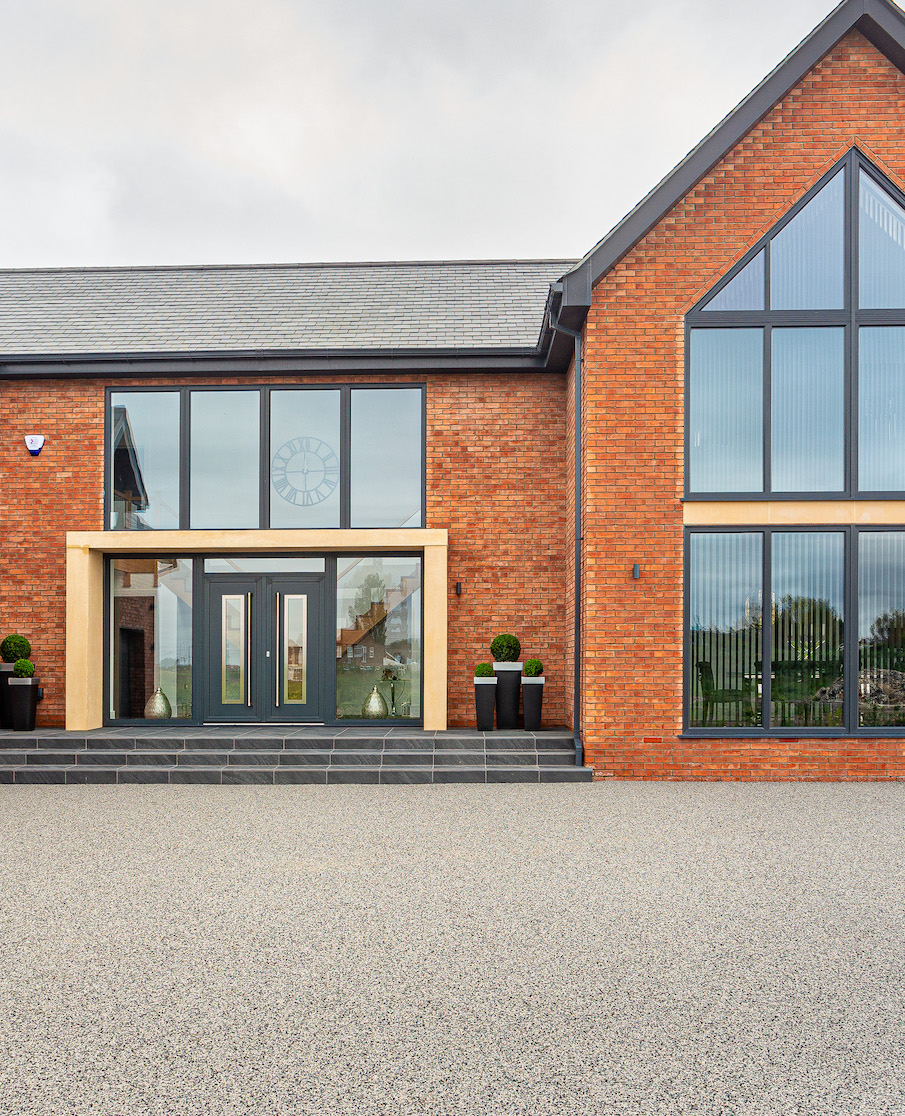
Two luxury houses, built as part of a new build development chose specified
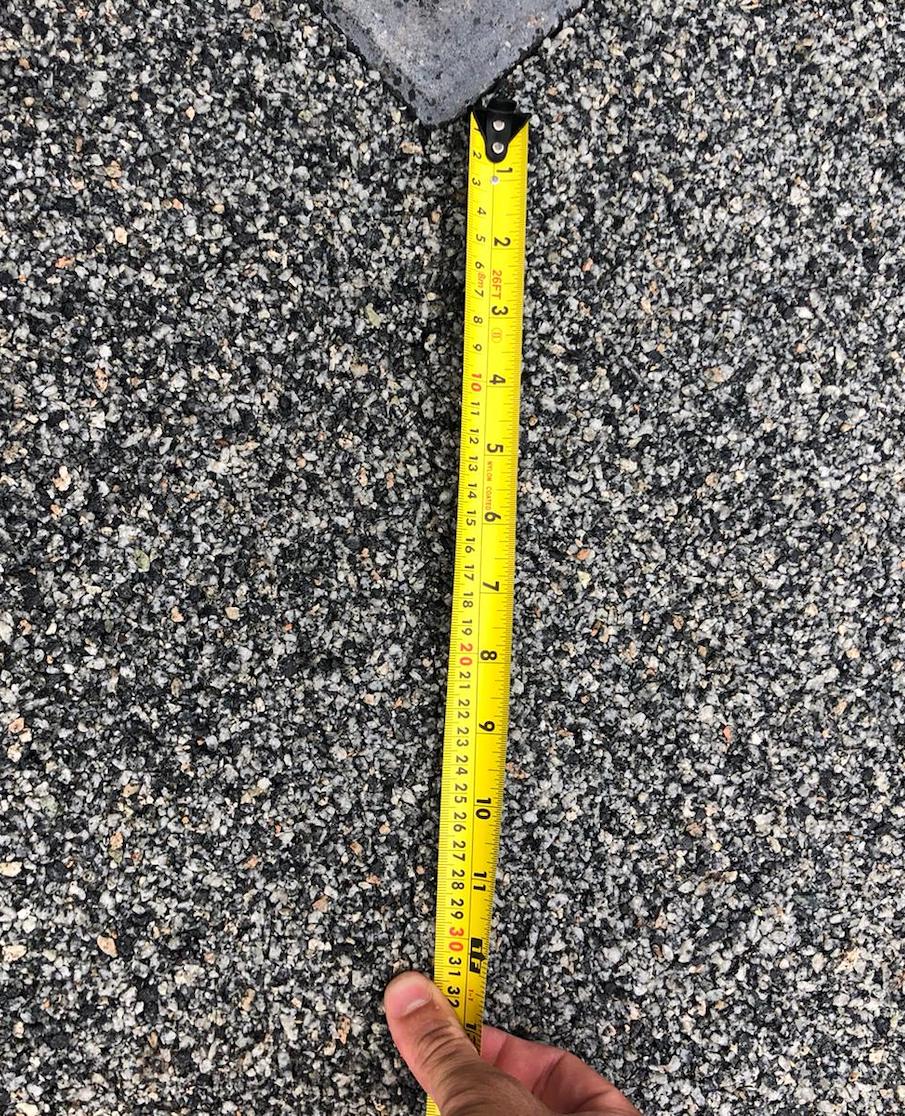
Welcome to our latest Resin Bound Blog post '5 Reasons Cracks Appear in Resin Bound Surfacing'. Resin Surfac
Watch the Vuba Channel...

Technical
Specification
| Alternative Names | WOTW Sample Case, Wonders of the World, Vuba Sample Case |
|---|---|
| Size | 1.88kg Suitable for 26.56kg DIY Aggregate Kits |
| Slip Resistance Value | Dependent upon Aggregate Kit |
| Los Angeles Coefficient | Available for each individual aggregate. |
| Mixed Resin : Aggregate Ratio | 1.625kg Mixed Resin : 25kg Aggregate |
| UV Resistance / Stability | UV Resistant |
| Elongation at Break (%) | 70% |
| Hardness (Shore D) | 65 Shore D |
| Tensile Strength (MPa) | 13 MPa |
| Gasoline/ Diesel Resistance | No Change |
| Minimum Application Temp | 5oC |
| Maximum Application Temp | 25oC |
| Suitable Substrates | Recommended - Open Grade Tarmac / Asphalt. Concrete, Cellular Grid and others also suitable. Contact us for more info. |
| Recommended Thickness | 18mm |
| Curing Schedule Guide | Assumed 20oC. Pot Life: 30 Mins Tack Free: 12-16 Hours Vehicle: 1 Day. Lower temperatures will retard the curing time. |
| Suitable Resin Binder | Valtex Resin Binder 1.625kg |
| Brand | Valtex Manufactured by Vuba |
| Coverage Rate Guidance | 3.5m2 per Aggregate Blend @ 18mm Depth |
Free £5
Amazon
voucher!
Let's see
your handy work! Leave
a review!
Please leave a review including photos! We love to hear from our customers, and see the fantastic projects they complete. You can also review us on Trust Pilot and Google! If you'd like your project to be seen by our staff or featured on our social media channels, please email in any images to jade.tyson@vubagroup.com.



